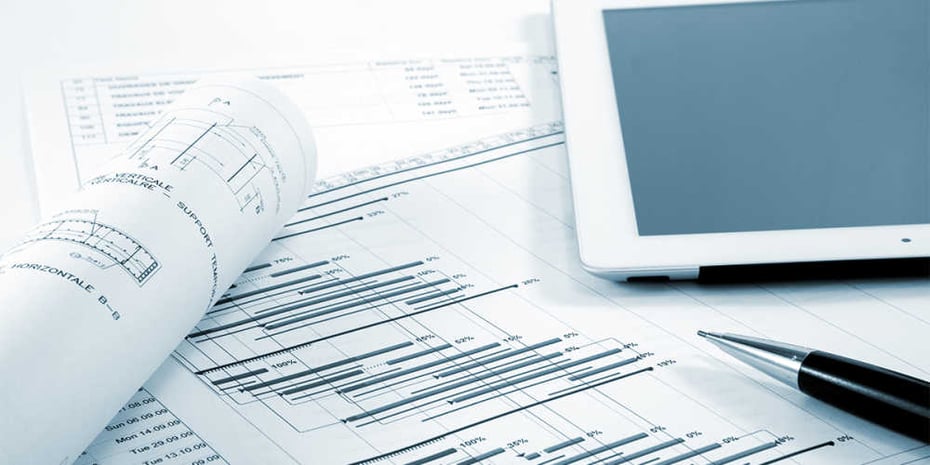Enhance Your Workflow: Construction Document Management Made Easy
Enhance Your Workflow: Construction Document Management Made Easy
Blog Article
Enhancing Operations Performance: Engineer's Expert Approaches for Construction Document Administration
In the world of building layout and construction, the precise monitoring of documents stands as a cornerstone for task success. These methods not only make sure smooth project development yet also hold the vital to unlocking improved productivity and precision in the detailed world of construction document management.
Key Record Company Strategies
When taking care of building files, among the vital strategies that engineers utilize is developing a organized and effective organization system. This system normally entails categorizing files based upon their kind, such as illustrations, requirements, agreements, and permits. By developing clear and distinct categories, engineers can rapidly find certain info when needed, saving time and minimizing errors in the building and construction process.
Within each group, architects even more organize records by developing subfolders or making use of numbering systems to represent modifications or variations (construction document management). This ordered framework guarantees that one of the most appropriate and present information is quickly available while keeping a record of modifications made throughout the task timeline
Moreover, engineers typically use electronic document monitoring systems that provide attributes like keyword search features, variation control, and accessibility limitations to improve company and cooperation amongst project stakeholders. These tools streamline the record access process, advertise real-time updates, and promote seamless interaction, ultimately contributing to the overall success of the construction job.
Collaborative System Assimilation
To optimize record management performance in building projects, engineers seamlessly incorporate collective platforms to improve interaction and enhance control amongst task stakeholders. By leveraging collaborative platforms such as task administration software program, cloud-based storage systems, and interaction tools, engineers can create a centralized center for all project-related files and communication networks. These systems permit staff member to access, review, and work together on files in real-time, reducing delays and the danger of mistakes connected with standard file administration methods.
Collaborative system integration also cultivates openness and responsibility within the task team, as all stakeholders have presence right into the most recent project updates and modifications. By centralizing interaction and record sharing, designers can guarantee that all staff member are working from one of the most updated information, reducing the opportunities of misunderstandings or disputes emerging because of outdated papers.
Furthermore, collaborative systems allow seamless collaboration between engineers, professionals, clients, and other job stakeholders, promoting a much more efficient and cohesive task workflow. By breaking down interaction obstacles and helping with info exchange, architects can drive performance and advancement in building and construction tasks, ultimately leading to effective job end results.
Version Control Finest Practices
Executing efficient version control practices is crucial for keeping record accuracy and consistency in construction jobs. By developing a clear system for managing modifications, job teams can make sure that every person is functioning from the most updated documentation, reducing the danger of mistakes and inconsistencies other during the construction phase.
Among the key finest methods for version control is to appoint distinct identifiers to each record variation. This can be achieved by using a numbering system or day stamp that clearly indicates the order of modifications. By plainly classifying each version, team members can conveniently track the development of the record and determine the most current variation.

Automation Tools for Effectiveness

Record control software application, like Procore or PlanGrid, systematizes job paperwork, making it quickly obtainable to all stakeholders. These systems permit real-time collaboration, version control, and automated backups, securing versus information loss. Additionally, Structure Info Modeling (BIM) software program automates the generation of building and construction drawings and ensures that modifications are integrated throughout all related papers.
Integrating automation tools with cloud storage space remedies additionally enhances ease of access and security. By automating the paper management process, task groups can concentrate their effort and time on value-adding tasks, inevitably boosting efficiency and task results.
Secure Data Administration Solutions
Successfully protecting and managing job data is extremely important in the building market to guarantee privacy and honesty throughout the job lifecycle. Safe data monitoring remedies play a vital role in protecting sensitive info from unauthorized gain access to or violations. Architectural companies can use encrypted cloud storage space solutions to firmly share and save project files with licensed personnel. Applying access controls, such as customer verification and consent settings, ensures that only licensed people can watch or customize sensitive data.
Additionally, making use of electronic civil liberties monitoring (DRM) devices adds an extra layer of safety by stopping the unapproved circulation or replication of job documents. Regular information back-ups are vital to mitigate the risk of data loss because of unforeseen circumstances like hardware failures or cyber-attacks. Collective platforms with built-in protection functions allow smooth communication and data sharing among task staff member while preserving data integrity.
Final Thought
In verdict, applying crucial record company techniques, incorporating joint systems, exercising version control finest practices, utilizing automation webpage devices, and adopting secure data monitoring remedies are essential techniques for improving workflow effectiveness in building record management. These experienced approaches can enhance processes, enhance interaction, make sure accuracy, and maintain information safety and security throughout the building project lifecycle.
In the realm of architectural layout and construction, the meticulous administration of files stands as a cornerstone for project success. These strategies not only ensure smooth project progression but additionally hold the crucial to opening enhanced productivity and precision in the complex world of building paper administration.
To enhance record administration performance in construction jobs, designers flawlessly incorporate collaborative systems to improve communication and enhance control amongst job stakeholders. These systems enable team participants to access, evaluation, and collaborate on documents in real-time, decreasing hold-ups and the threat of errors associated with standard paper management methods.
Utilizing automation tools in building record management substantially improves performance and enhances processes for project groups. construction document management.
Report this page